Portahut and tiny house plans. 65-874 square feet.![]()
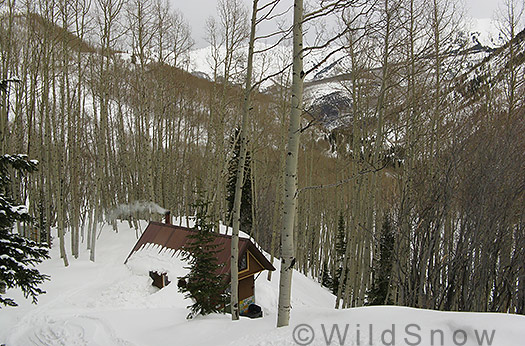
WildSnow Field HQ 'tiny house' camp trailer has solar electric that needs periodic upkeep.
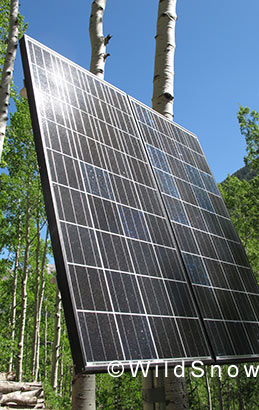
Our panels are a pair of Koyocera 135 watt units. During winter, they only get sun for about three hours so we overdid the amount of panel for our install, nothing worse for a PV system than too little panel that leads to a permanently undercharged battery bank.
We saved money on our solar system up at our “portahut” tiny house by using conventional lead plate batteries that need water now and then, along with what they call “equalization.” The idea is that crud builds up on the battery interior and you zap the things with a controlled overcharge (around 15.5 V) to knock it off, along with letting your charge controller do voodoo that gets the batteries voltage “equalized” so one battery isn’t operating at higher voltage than another and thus constantly trying to charge the lesser battery. The process is supposed to happen once every few months (some say once a month). Our Blue Sky controller can equalize automatically once per month, but automating the process produces lots of flammable hydrogen at who-knows-what time of day. Better to be in manual control and switch on the equalizing when you’re not cooking or otherwise operating a nearby open flame in your “tiny house.” Here is how it went:
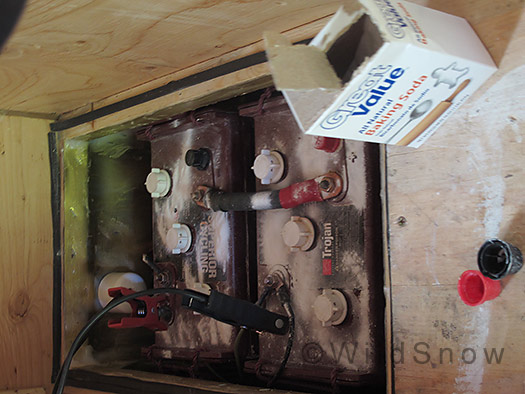
Trojan battery pair (shown sideways) with some baking soda to neutralize acid seep. Our solar consultant at Sunsense Solar here in Carbondale recommended hooking up a charger from our generator to make sure the batteries got max charge for the equalization process, hence the charger clamps you can see in the photo. Turned out that wasn't necessary as the batteries possessed a full charge due to summer sun and light use. The batteries are Trojan L16H, 6 volts 420 amp hours each in new condition at room temperature.
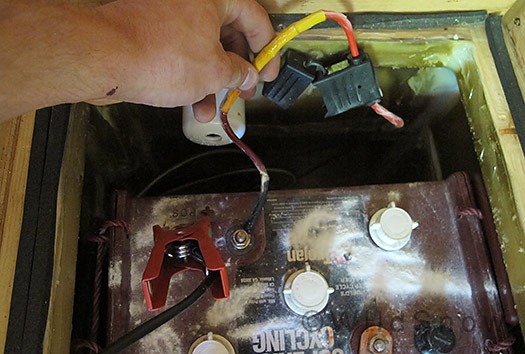
Battery bank connects to controller through a 30 amp blade fuse. I had to access the DIP switches on the charge controller by taking the controller cover off, so I disconnected all loads and sources before messing around with our expensive Blue Sky 2512 charge controller.
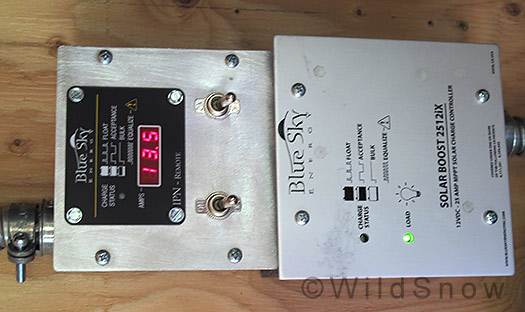
Blue Sky controller and IPN remote display, showing our battery voltage before we started the equalization process.
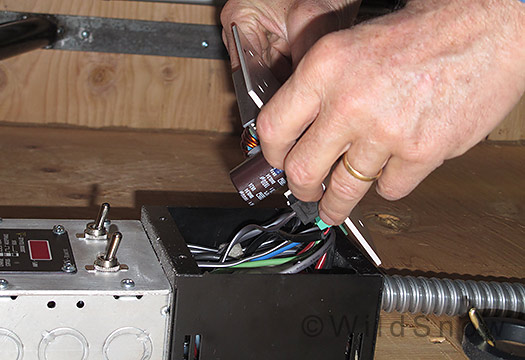
Removing cover from charge controller so we can access DIP switch settings. As mentioned above, at this time we're leaving the automatic equalization disabled, making it so we have to access the switches each time we want to equalize.
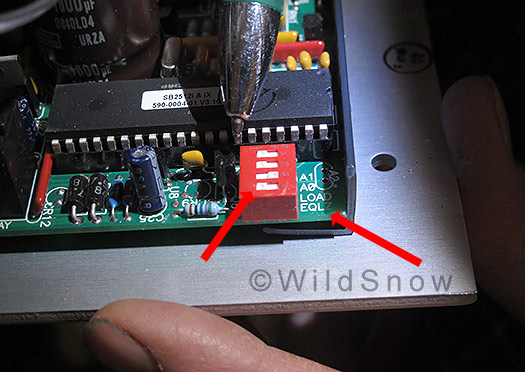
Inside back of controller, DIP switch number 4 indicated by arrows.
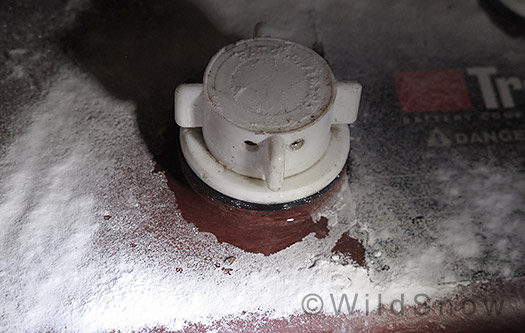
Battery cell cap, with boil seepage. Before we began the process we added some distilled water to each cell, then topped off when done. I found that equalizing with the caps off seemed to make less acid mess, but again, eye protection mandatory while messing around.
I’m still not sure the upkeep and hydrogen venting issues with this type of battery are worth the initial cost savings when compared to sealed batteries. For example, when used during winter in a small cabin, you don’t want to be venting in any way that could introduce hydrogen into the interior of your structure. That means a venting system that works with exterior air, thus cooling off the batteries and reducing their capacity. More, even if you set up automatic equalization for flooded batteries such as ours, you still have to check the water level and clean up acid seepage. My advice is to seriously consider spending the extra coin on maintenance free batteries for this sort of small-scale solar install.
Whatever the case, now you know what’s involved with manual equalization and you’ve got an overview of “tiny house” solar battery issues.
See our portahut tiny house category.
WildSnow.com publisher emeritus and founder Lou (Louis Dawson) has a 50+ years career in climbing, backcountry skiing and ski mountaineering. He was the first person in history to ski down all 54 Colorado 14,000-foot peaks, has authored numerous books about about backcountry skiing, and has skied from the summit of Denali in Alaska, North America’s highest mountain.
